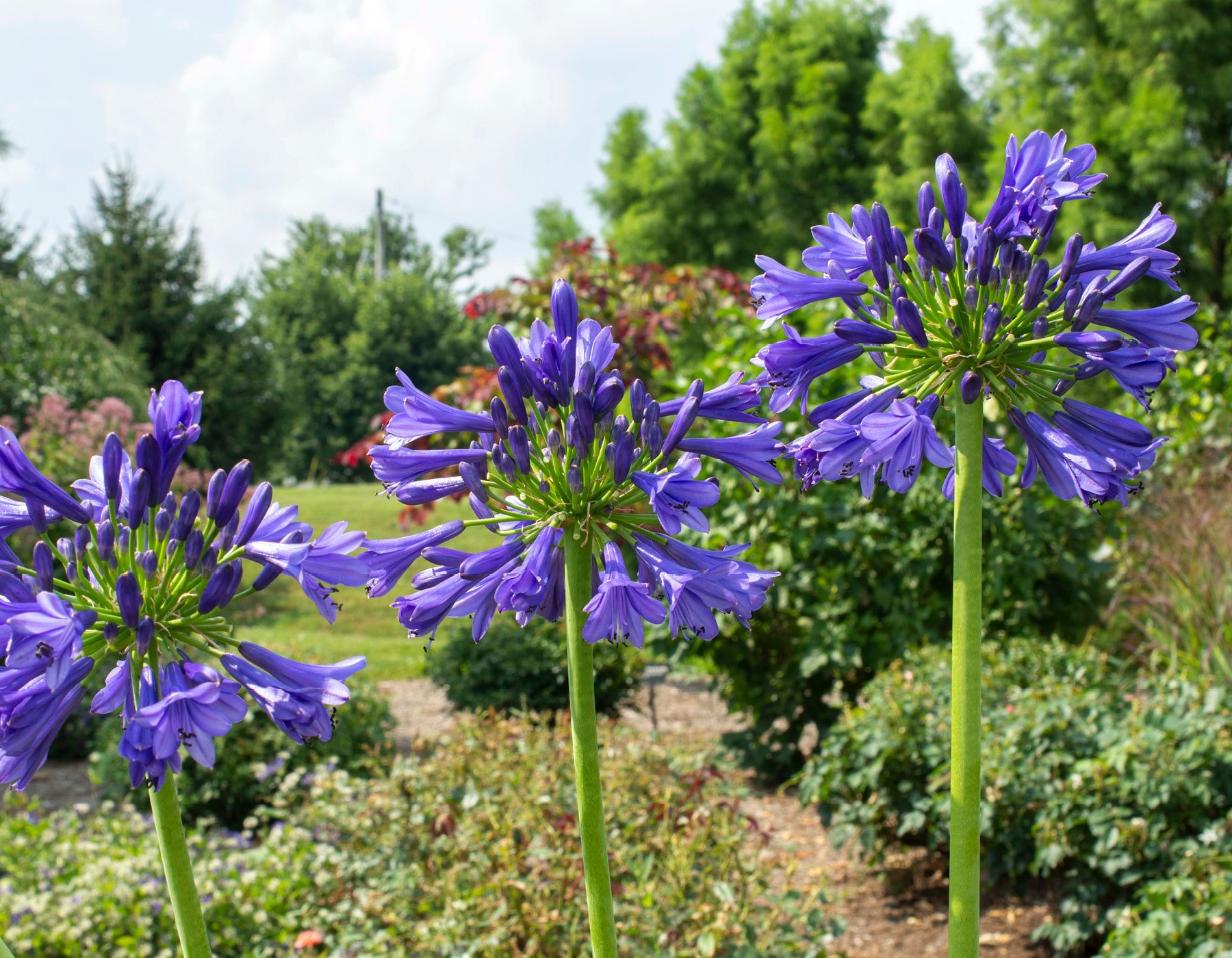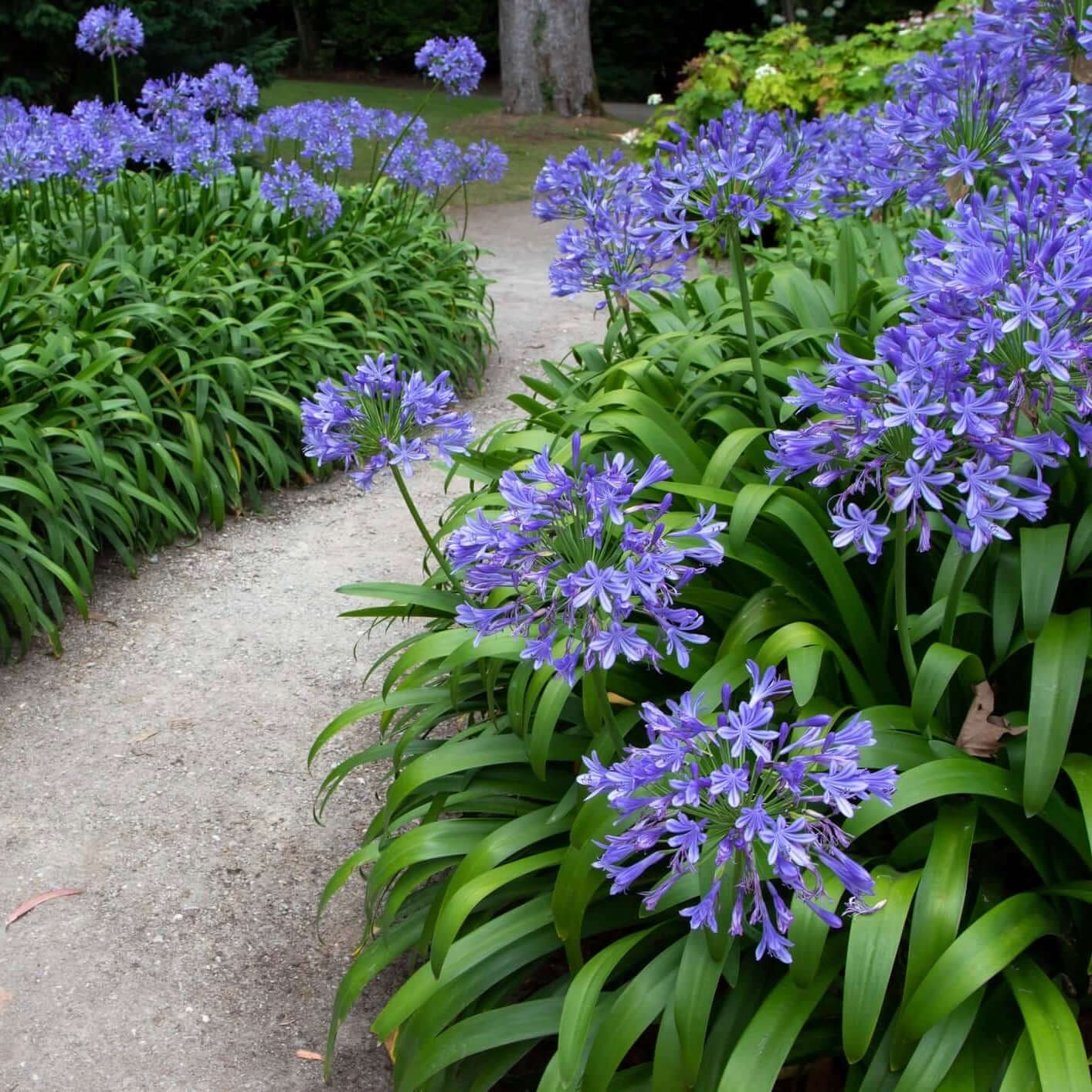Agapanthus Varieties: Selecting the most effective for Your Landscape
Agapanthus Varieties: Selecting the most effective for Your Landscape
Blog Article
Mastering the Art of Agapanthus Treatment: Necessary Actions for Healthy And Balanced Development and Vibrant Blooms
In the realm of cultivation, the farming of agapanthus stands as a gratifying endeavor for those who look for to nurture these sophisticated flowering plants. From picking the appropriate selection to understanding trimming techniques, the journey towards growing growing agapanthus plants is diverse and holds the vital to opening the complete capacity of these agricultural treasures.

Choosing the Right Agapanthus Range

When choosing the appropriate Agapanthus selection for your garden, think about factors such as environment suitability, blossom shade, and development habit. Additionally, consider the environment in your area to ensure the Agapanthus variety you pick can prosper in your specific conditions. Understanding the development behavior of various Agapanthus varieties is important for correct placement within your garden.
Suitable Growing Problems
Considering the optimum ecological requirements is essential for effective Agapanthus farming. Agapanthus plants are delicate to cool temperatures and must be protected from frost during wintertime months.
To guarantee healthy growth and lively blossoms, plant Agapanthus bulbs at a depth of regarding 2-4 inches and space them 8-12 inches apart. Including organic issue, such as garden compost, to the soil can enhance drain and fertility, promoting durable root advancement. Mulching around the base of the plants assists preserve moisture and suppresses weed growth. Routine watering is vital, specifically during the expanding period, to keep the dirt consistently wet but not saturated.
Watering and Feeding Tips
Maintaining proper wetness levels and offering necessary nutrients are crucial elements in the treatment regimen for Agapanthus plants. It is essential to strike a balance when it comes to watering Agapanthus. These plants favor consistently moist soil however are at risk to root rot if overwatered. During the growing period, water deeply as soon as a week, making sure the dirt is well-draining to prevent waterlogging. In hotter climates or throughout periods of drought, even more constant watering may be necessary to maintain the soil equally wet. Nevertheless, lower watering in the winter months to stop waterlogged conditions.
Fertilizing Agapanthus is essential for advertising healthy growth and prolific blooms. Apply a balanced fertilizer, such as a 10-10-10 formula, in the early springtime as new growth visit emerges. Repeat this application every 6-8 weeks throughout the growing period. Avoid too much fertilizing, as it can cause rich vegetation at the expense of blossoms. Constantly adhere to the manufacturer's directions for proper dilution and application techniques. By complying with these watering and feeding ideas, you can guarantee your Agapanthus plants flourish and create lively, long-lasting blooms.
Pruning Techniques for Agapanthus
Pruning Agapanthus plants at the suitable times and with correct methods is essential for preserving their health and advertising optimal growth and blooming. The perfect time to prune Agapanthus remains in late winter months or early springtime prior to new development arises. Begin by eliminating any type of dead or Read Full Report yellowing fallen leaves near the base of the plant. Cut them as close to the ground as possible without harming the emerging shoots.
For flowered stems, wait up until the flowers have perished and then trim them back to the base. This not just cleans up the plant's appearance however also encourages the development of brand-new blossom buds. Deadheading spent blossoms can additionally reroute the plant's energy into generating more blooms as opposed to setting seeds. Nevertheless, if you intend to gather seeds for proliferation, leave some flowers to mature and dry on the plant.
Keep in mind to utilize clean, sharp tools to make accurate cuts and minimize the threat of introducing illness. Agapanthus. Normal trimming will aid maintain your Agapanthus hop over to these guys looking neat and healthy and balanced while making certain a bountiful display screen of stunning flowers
Taking Care Of Common Bugs and Conditions
After guaranteeing proper trimming techniques for Agapanthus, it is crucial to deal with usual parasites and conditions that can affect the health and wellness and vigor of these plants. One common pest that impacts Agapanthus is the Agapanthus gall midget.
Additionally, Agapanthus plants can endure from root rot if they are planted in badly draining soil. By being watchful and taking punctual activity versus illness and pests, you can help your Agapanthus plants flourish and generate dynamic blossoms. Agapanthus.

Verdict
Finally, grasping the art of agapanthus care involves choosing the best variety, supplying excellent growing conditions, proper watering and fertilizing, ideal pruning methods, and resolving usual pests and diseases. By adhering to these vital steps, you can ensure healthy growth and vivid flowers for your agapanthus plants. Remember to on a regular basis keep an eye on and preserve your plants to advertise their overall wellness and durability.
To ensure healthy and balanced development and vibrant blooms, plant Agapanthus bulbs at a depth of concerning 2-4 inches and room them 8-12 inches apart. By following these watering and fertilizing pointers, you can ensure your Agapanthus plants thrive and generate vibrant, resilient flowers.
One typical insect that affects Agapanthus is the Agapanthus gall midge. In addition, Agapanthus plants can suffer from root rot if they are planted in inadequately draining pipes dirt. By adhering to these crucial steps, you can make certain healthy and balanced development and dynamic blossoms for your agapanthus plants.
Report this page